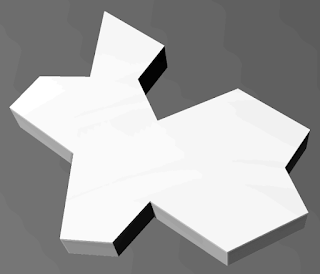Nine kites

All permutations of polykites from 1-24 have been exhaustively researched by Joseph Myers. His computational results almost run into trillions. For more info, please visit - https://www.polyomino.org.uk/mathematics/polyform-tiling/ I have already covered a few polykites (including the hat and turtle) and have now picked out another that has an interesting property. This polygon has sixteen sides and I have named it the 'hare'. It also resembles a bushy tailed squirrel but I already have accounted for two of them - https://hedraweb.wordpress.com/2022/10/14/polydrafter-squirrels/ It tiles periodically with or without reflections Hares can be assembled to make up triangles of unlimited size. The hexagon on the right is made up of six of the smallest triangles. Smallest hexagon inside a large triangle. The triangular area above can also be assembled in at least one other way. I flipped it to suit. Below is a larger hexagon made up ...
